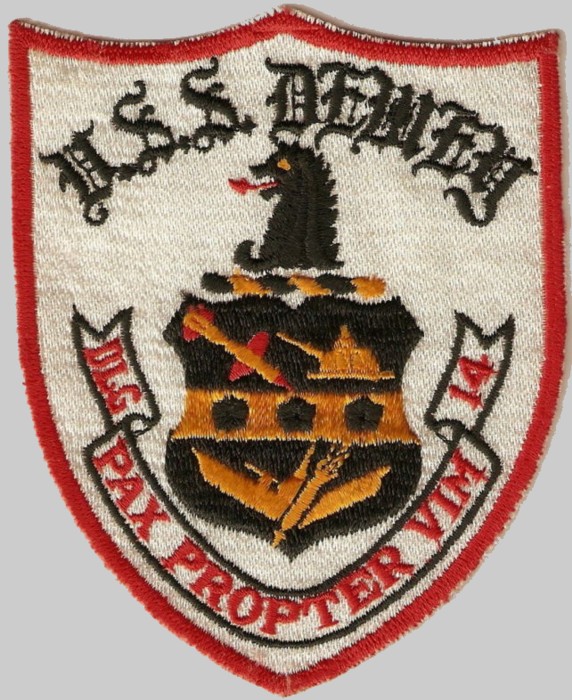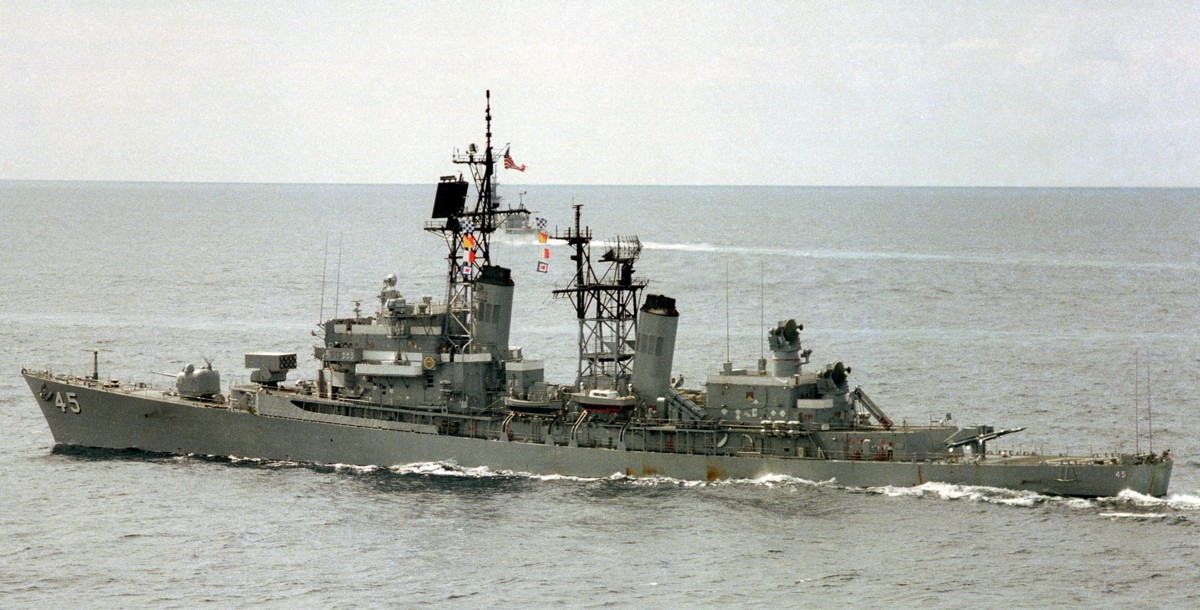|
|
||
|
HOME
|
US Navy -
ships
|
US Navy - air
units
|
USMC - air
units
|
International
Navies
|
Weapon Systems
|
Special Reports |
||
|
|
||
|
|
||
US Navy - Guided Missile DestroyerDLG 14 / DDG 45 - USS Dewey |
||
|
|
||
|
||
|
|
||
|
Type, class:
Guided Missile Destroyer - DDG; Farragut (Coontz) class planned as DL 14 / built and commissioned as DLG 14 / redesignated DDG 45 in 1975 Builder: Bath Iron Works, Bath, Maine, USA STATUS: Awarded: October 26, 1956 Laid down: August 10, 1957 Launched: November 30, 1958 Commissioned: December 7, 1959 redesignated DDG 45 on June 30, 1975 Decommissioned: August 31, 1990 Fate: stricken on November 20, 1992 / sold for scrap in 1994 / scrapped Namesake: Admiral George Dewey (1837-1917) Ships Motto: PAX PROPTER VIM (peace through power) Technical Data: see: INFO > Farragut (Coontz) class Guided Missile Destroyer - DDG |
||
|
|
||
ship images |
||
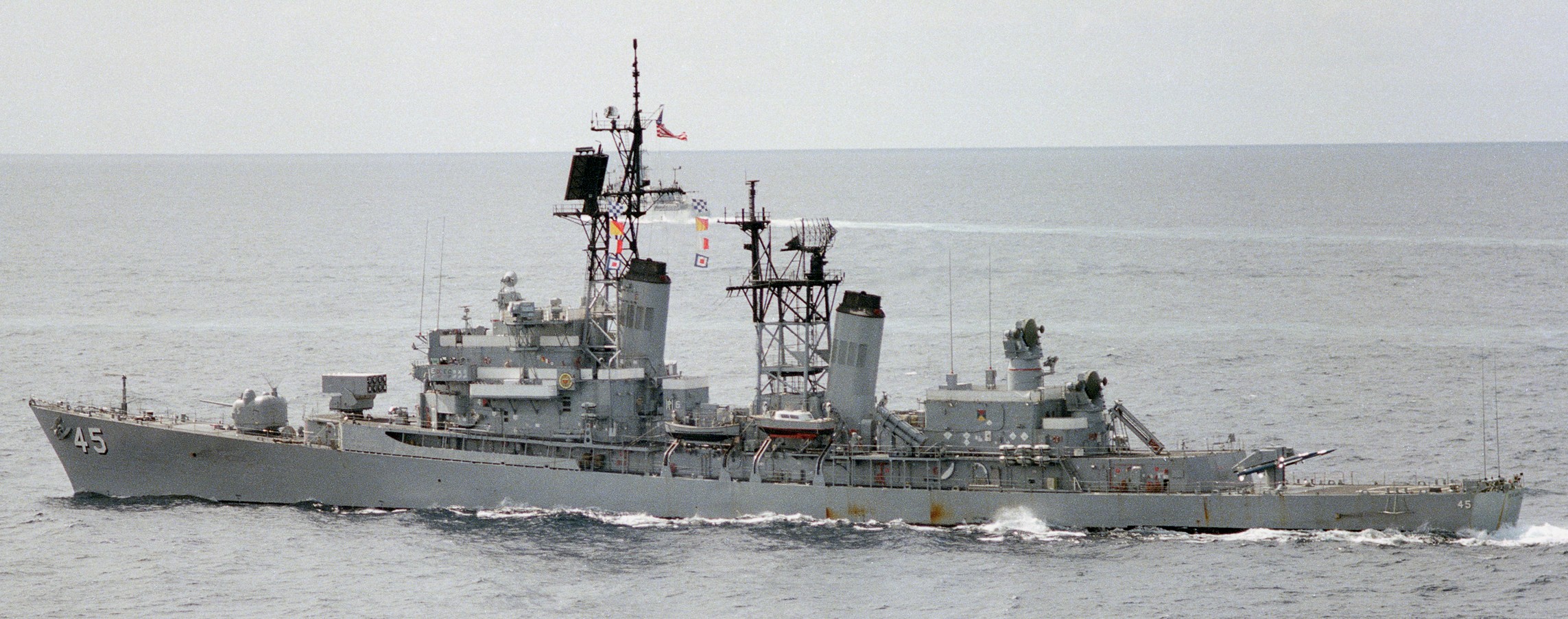 April 1988 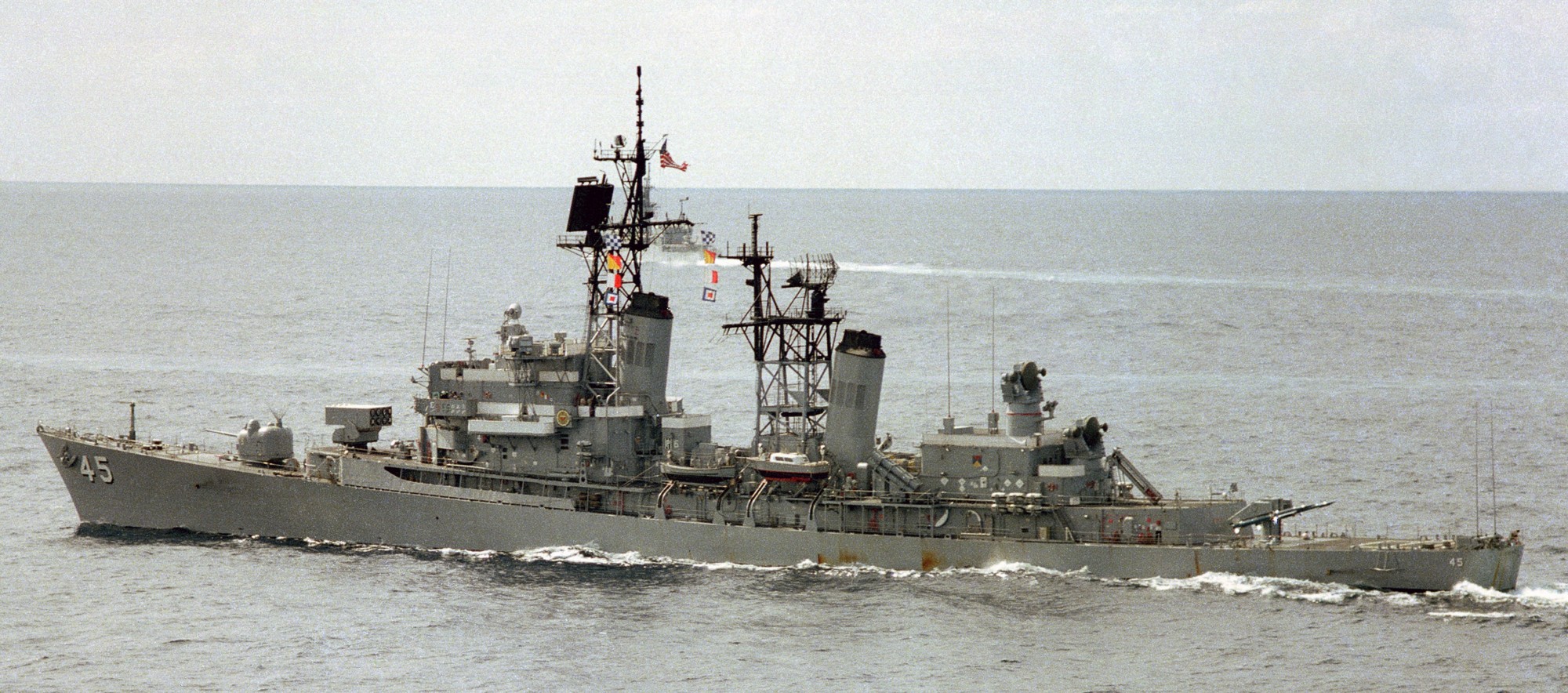 April 1988 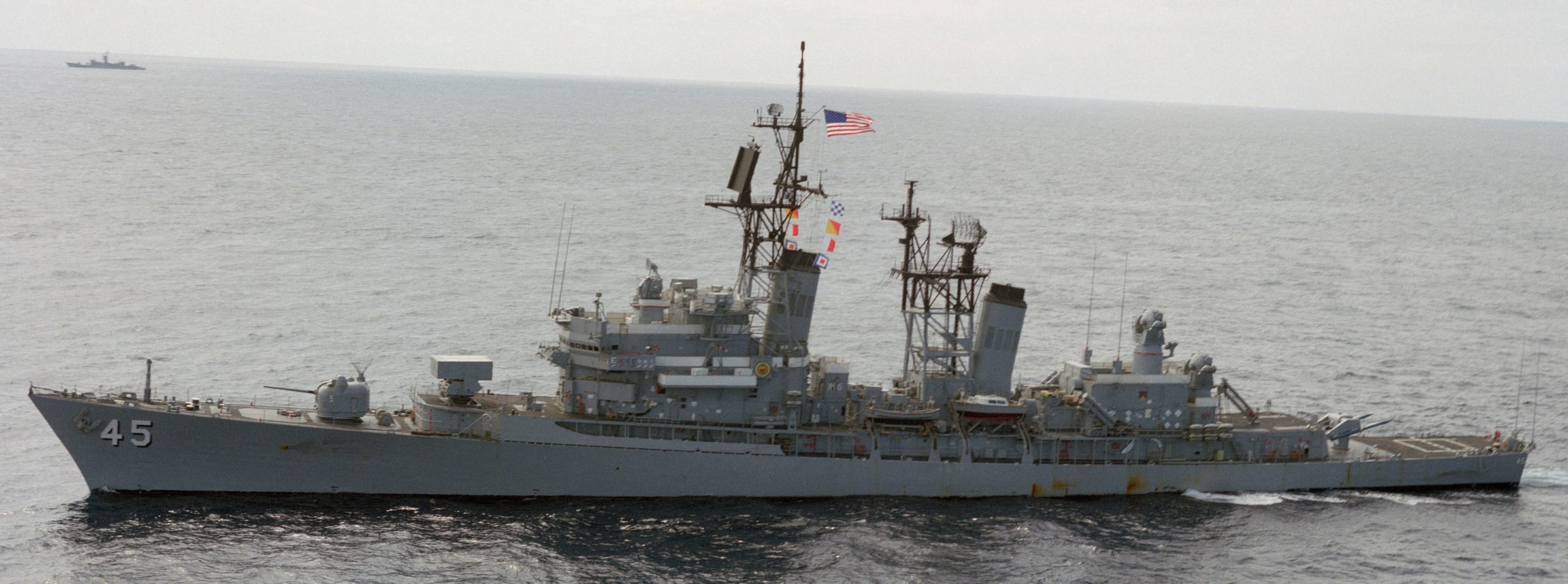 March 1988 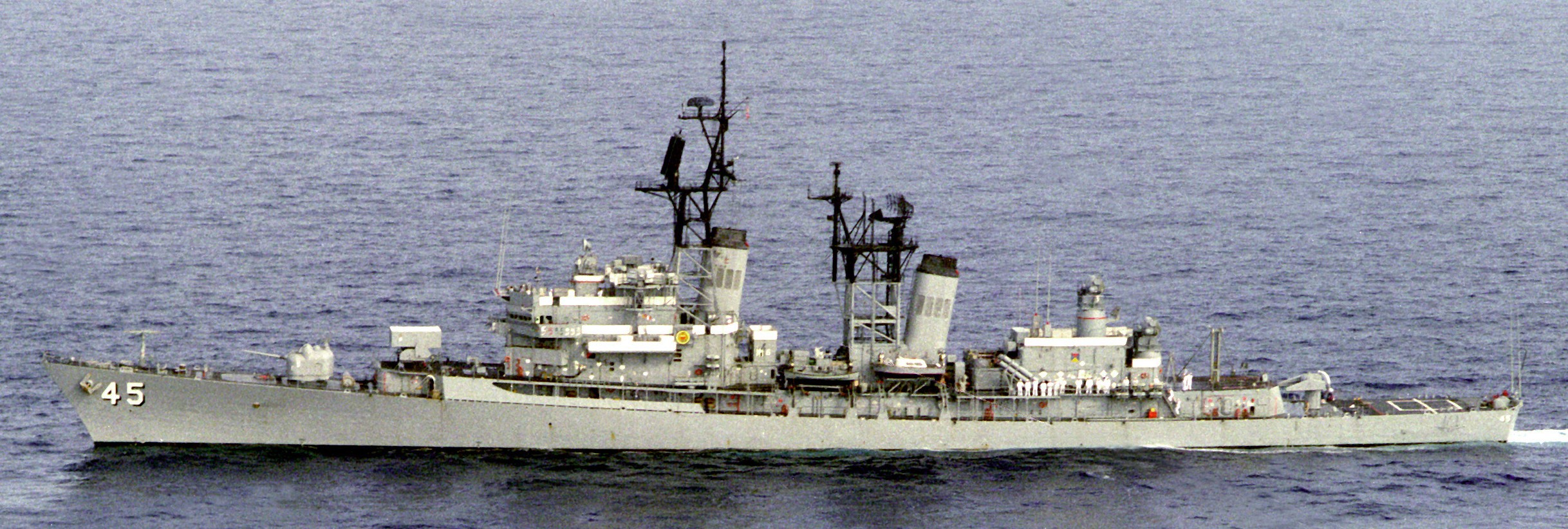 October 1987 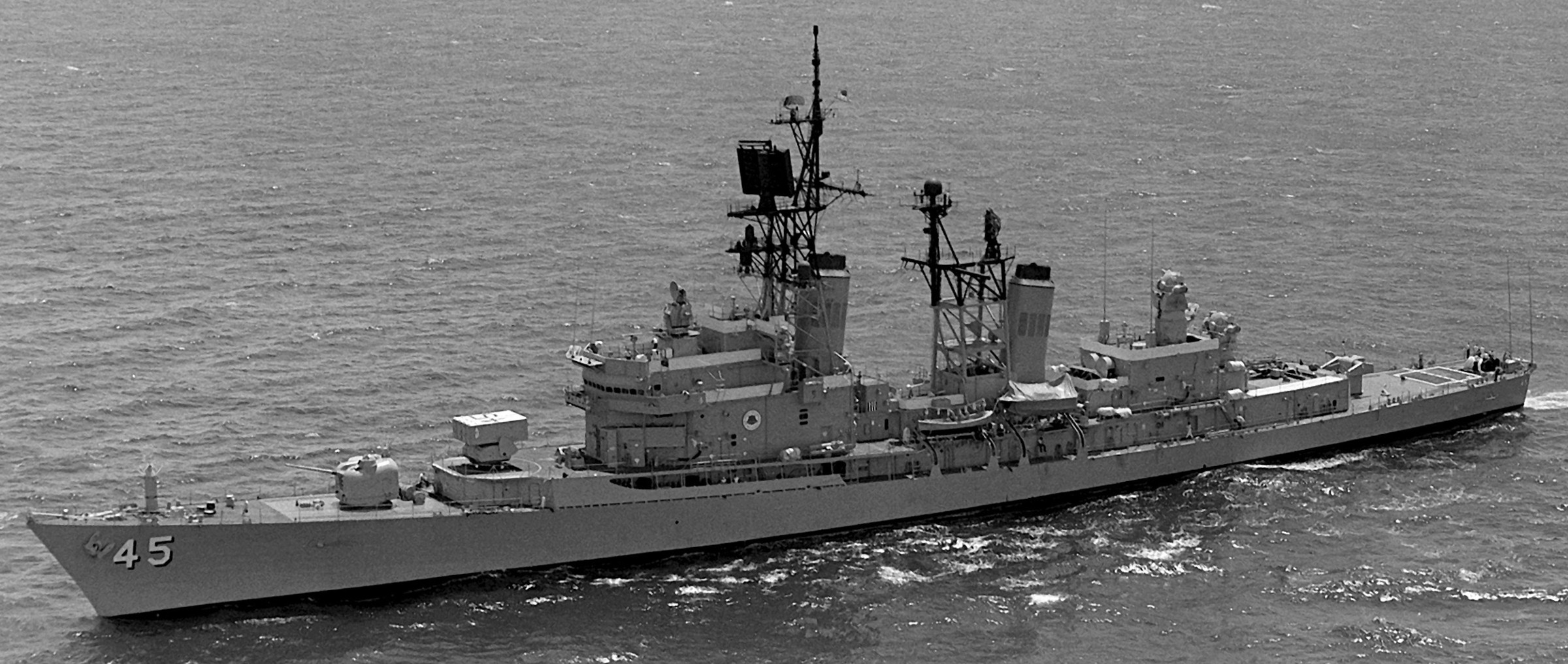 during exercise UNITAS XX - June 1979 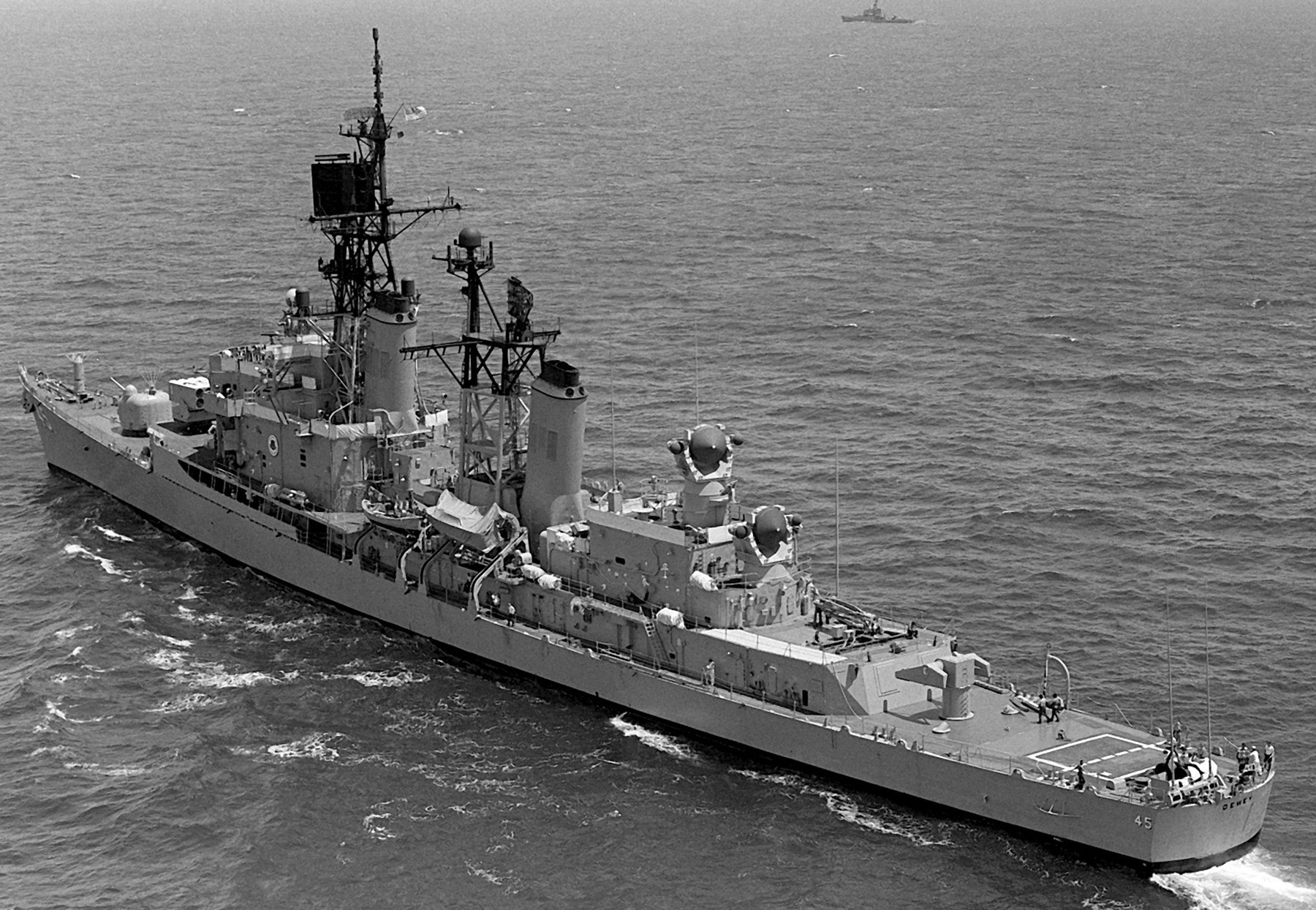 during exercise UNITAS XX - June 1979 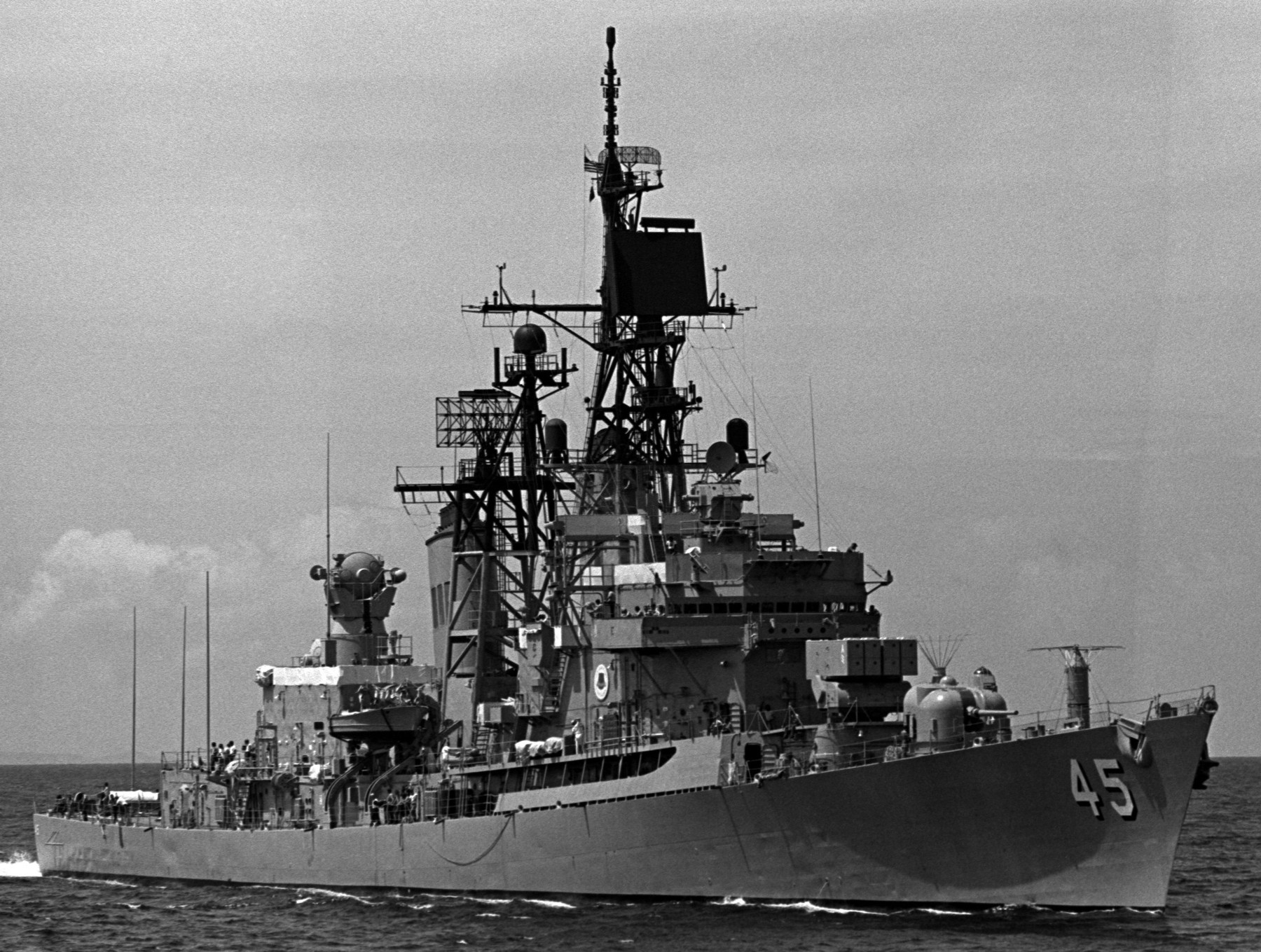 during exercise UNITAS XX - June 1979 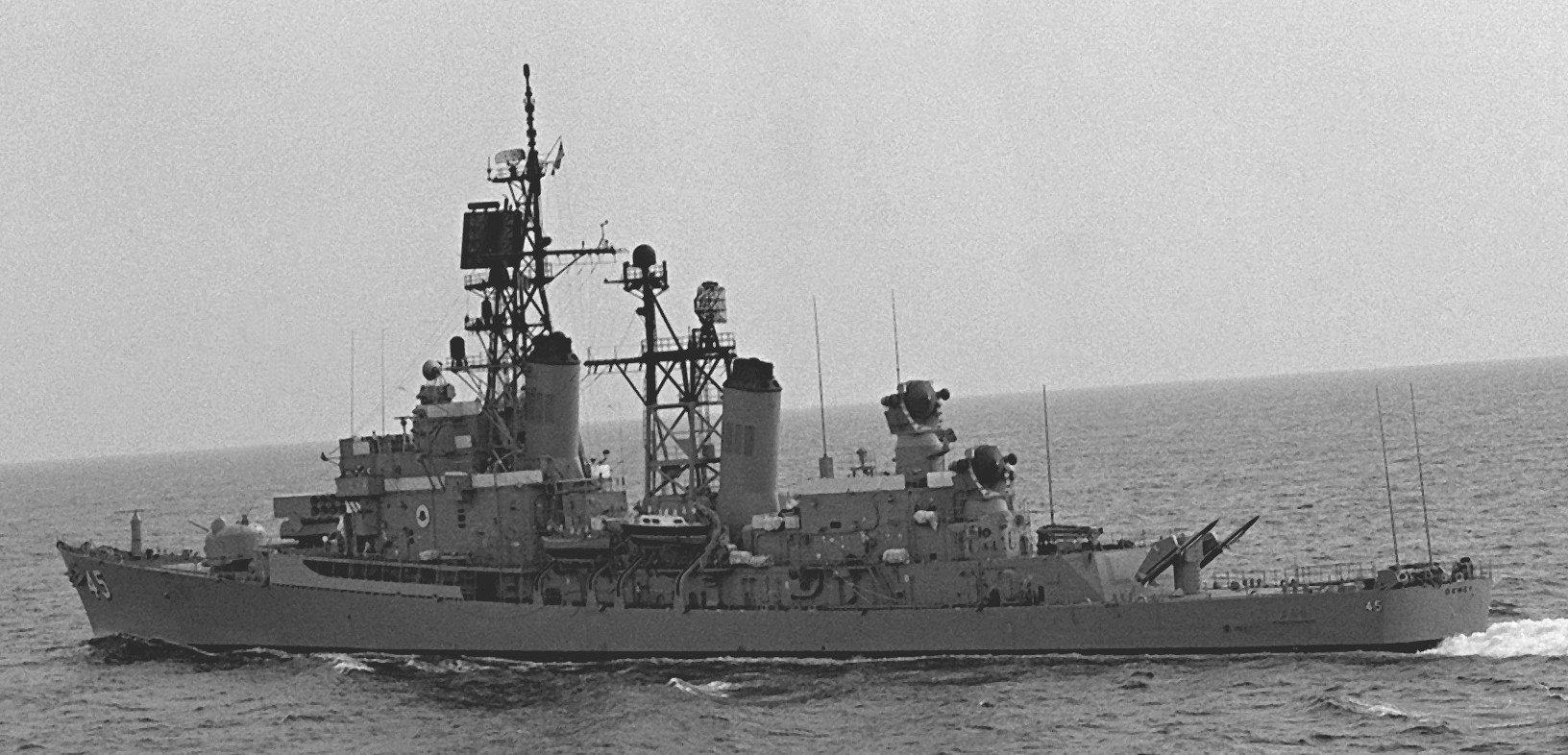 during exercise UNITAS XX - June 1979 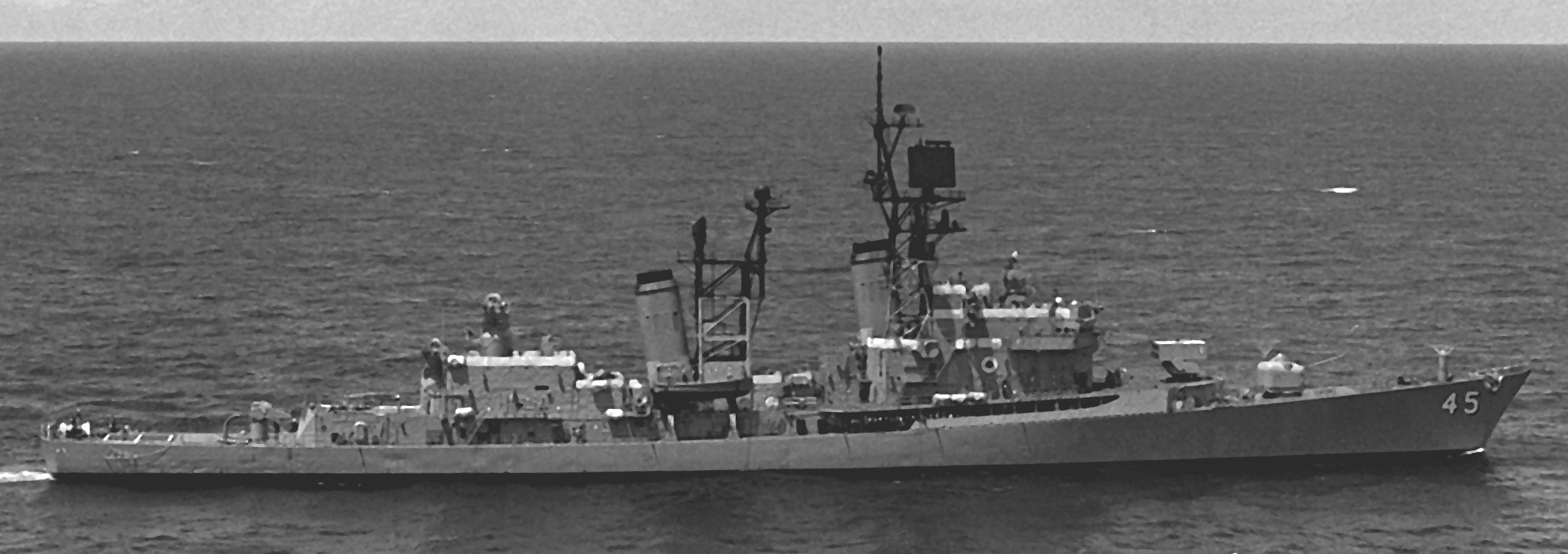 during exercise UNITAS XX - June 1979 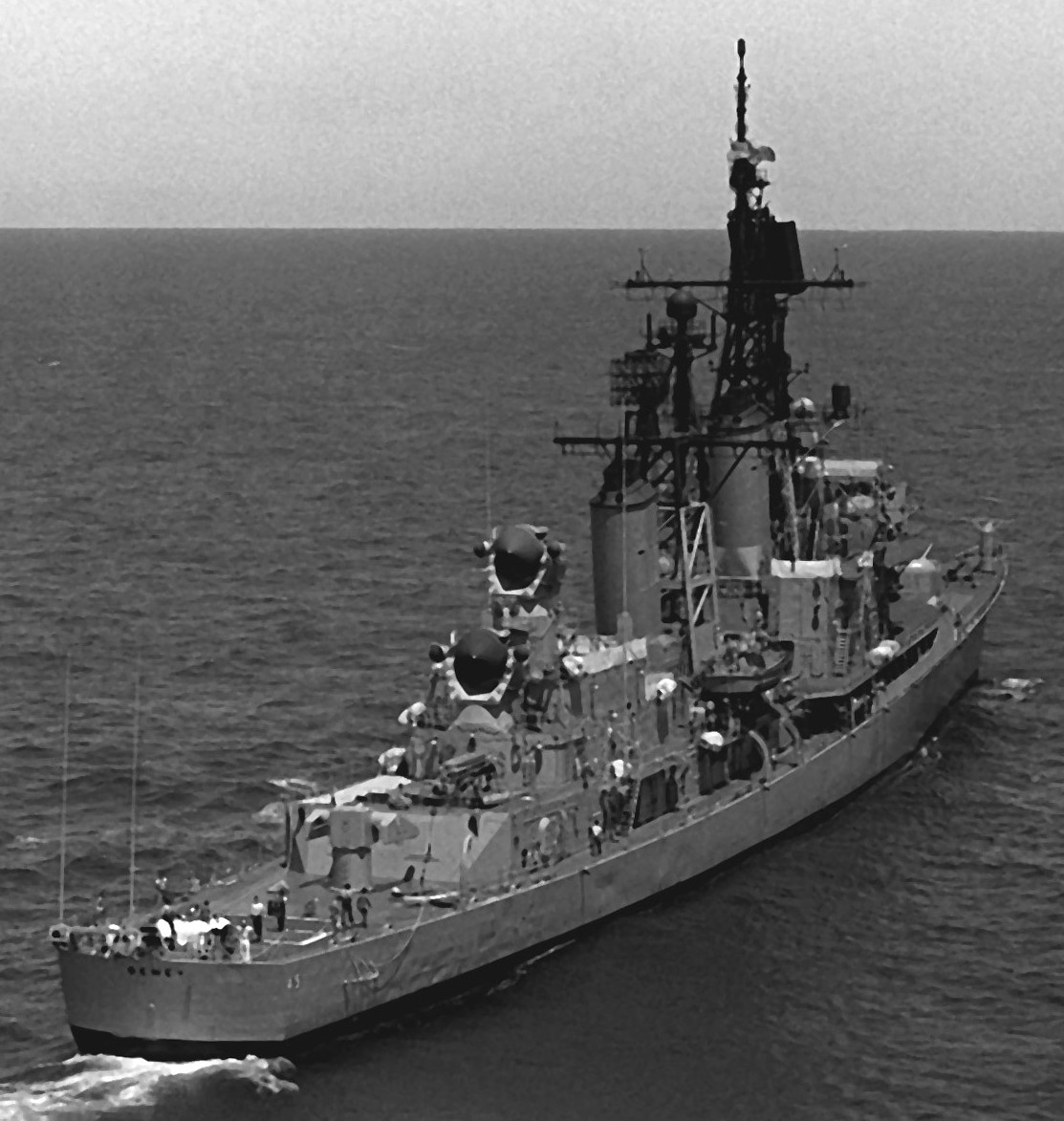 during exercise UNITAS XX - June 1979 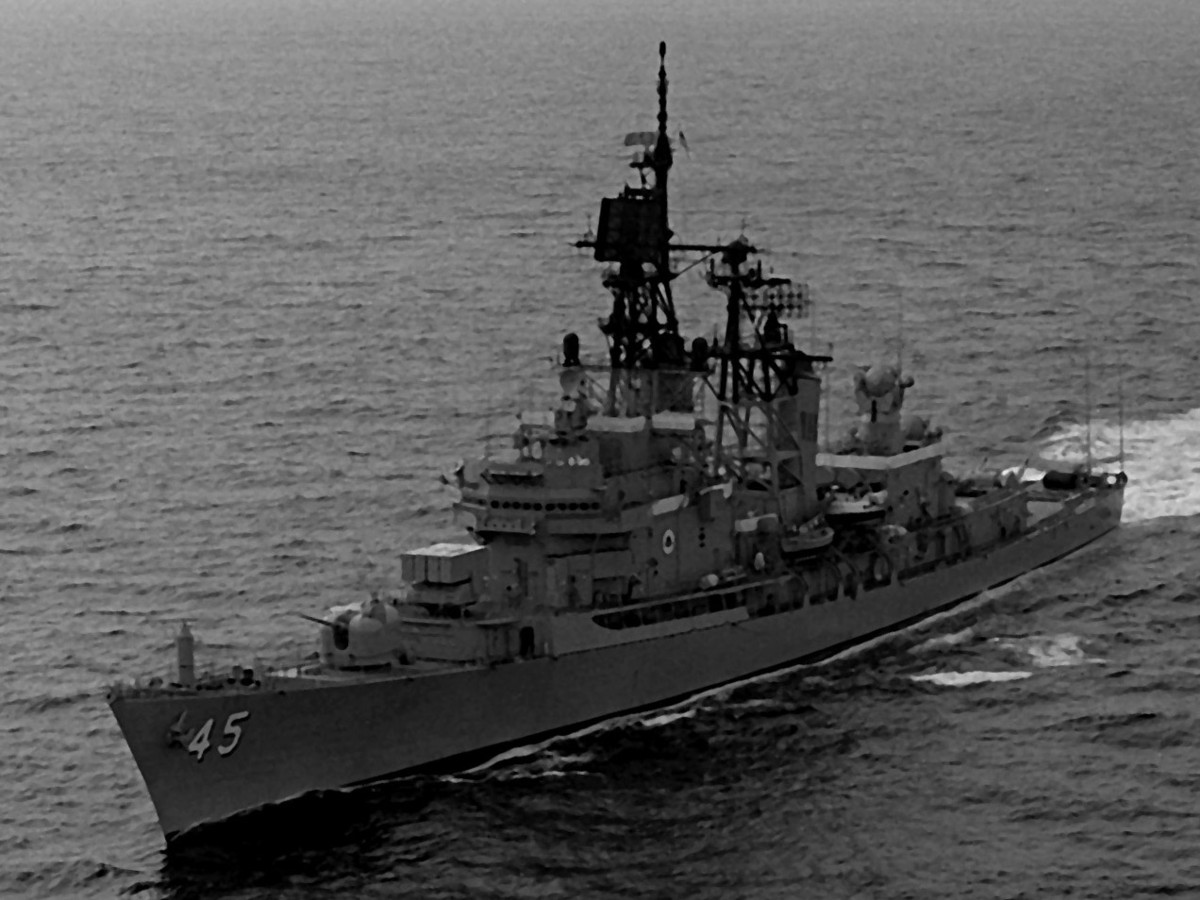 during exercise UNITAS XX - June 1979 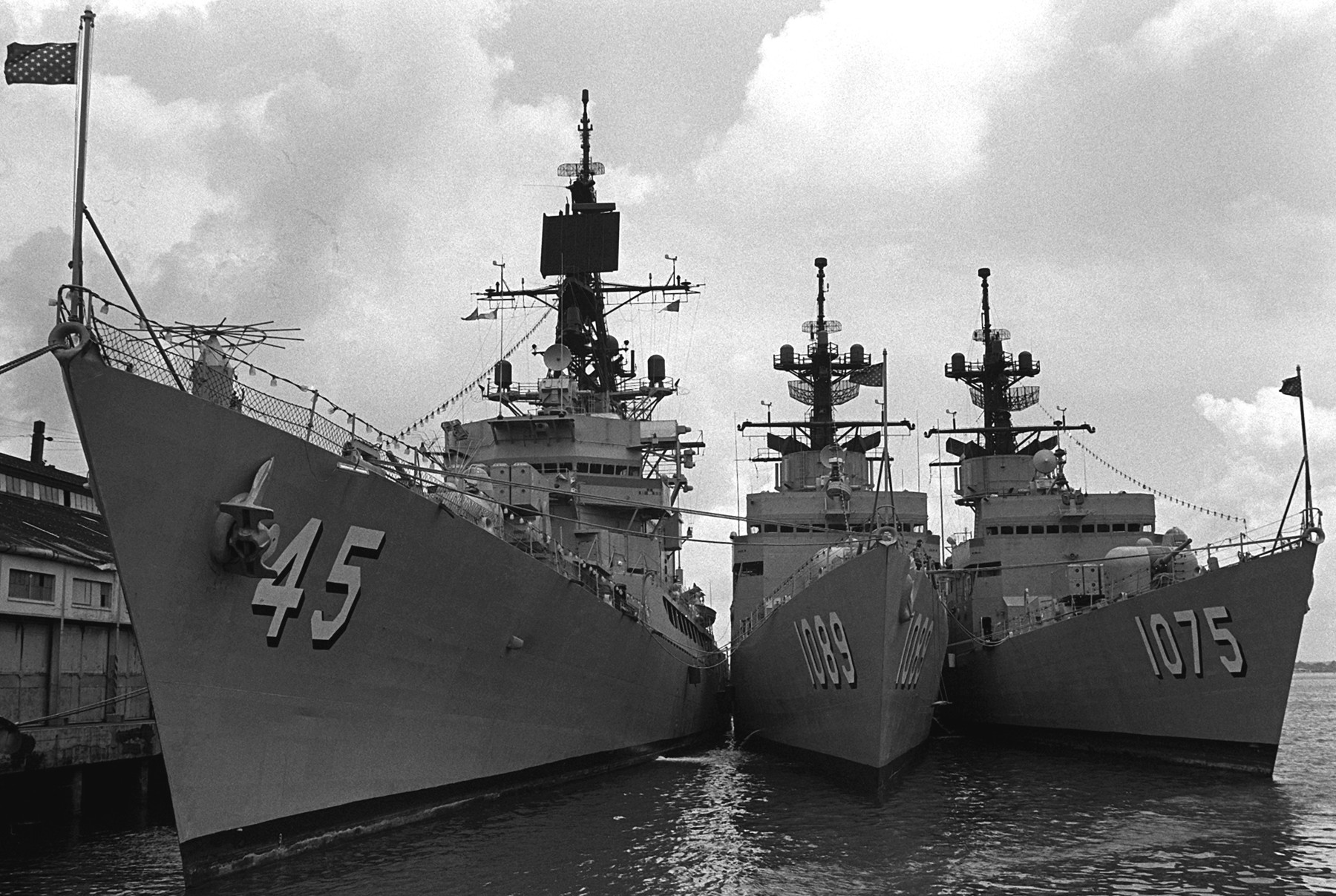 USS Dewey alongside two Knox-class Frigates - 1979 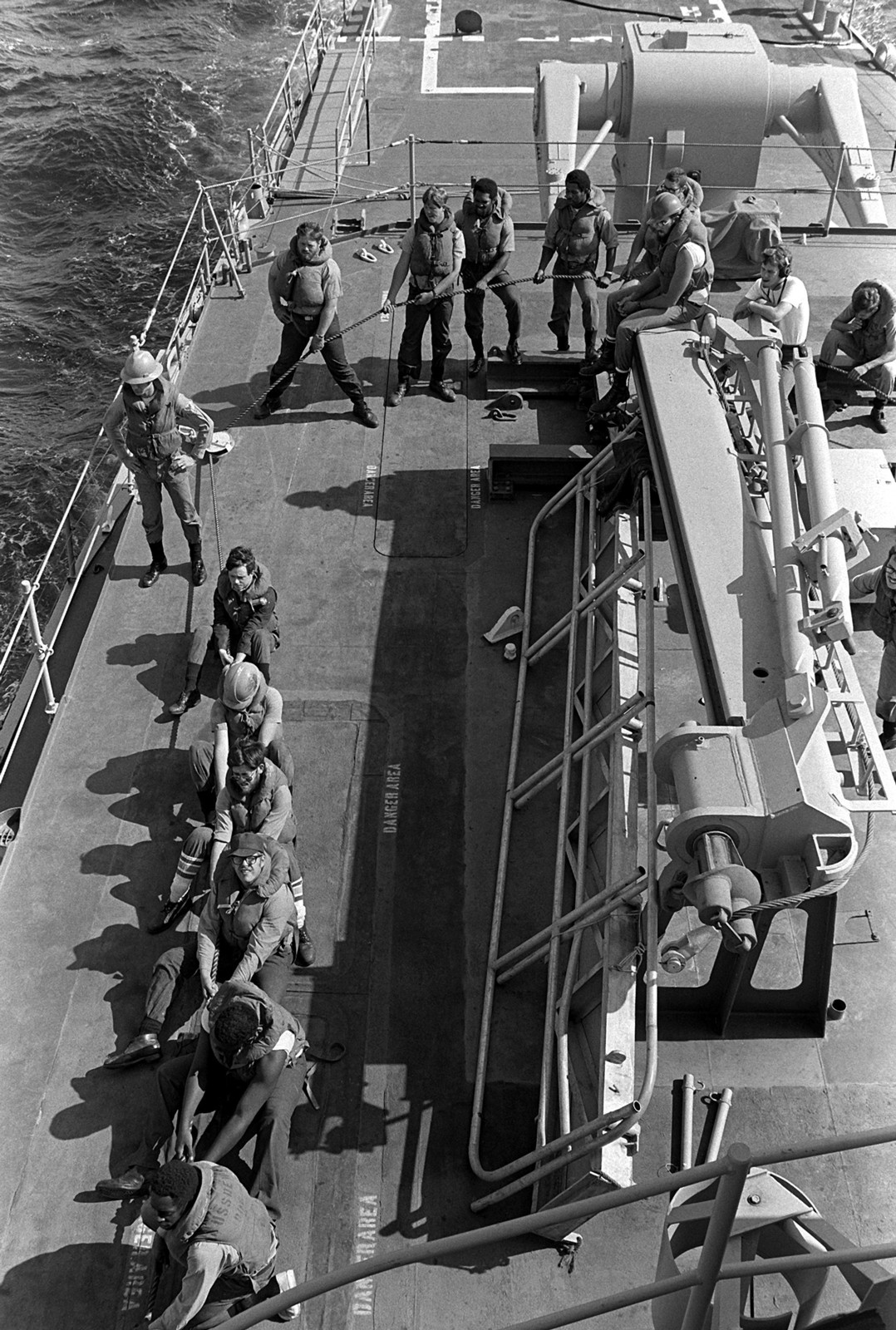 during exercise UNITAS XX - June 1979 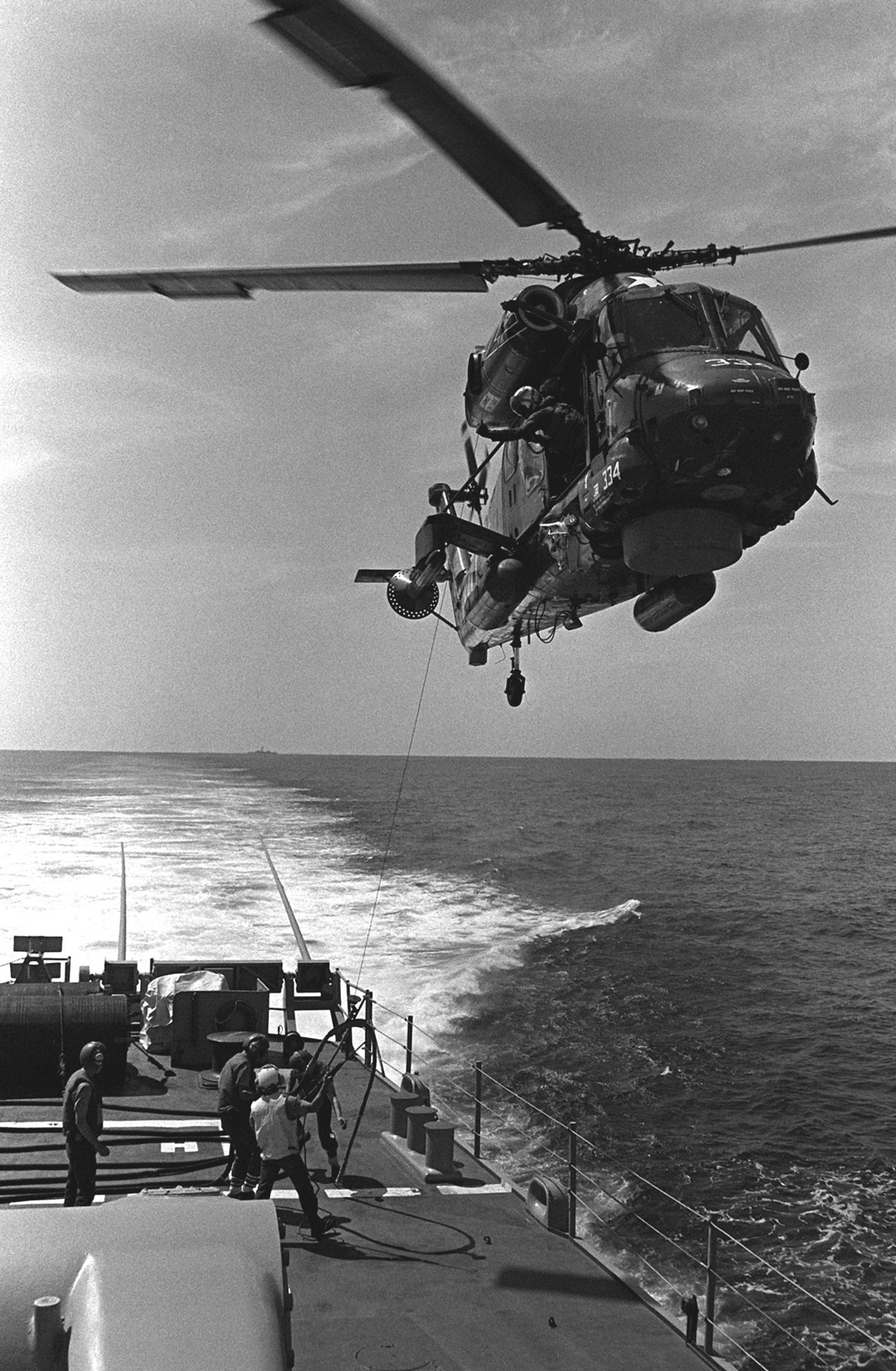 SH-2F Seasprite (HSL-36) inflight refueling during exercise UNITAS XX - June 1979 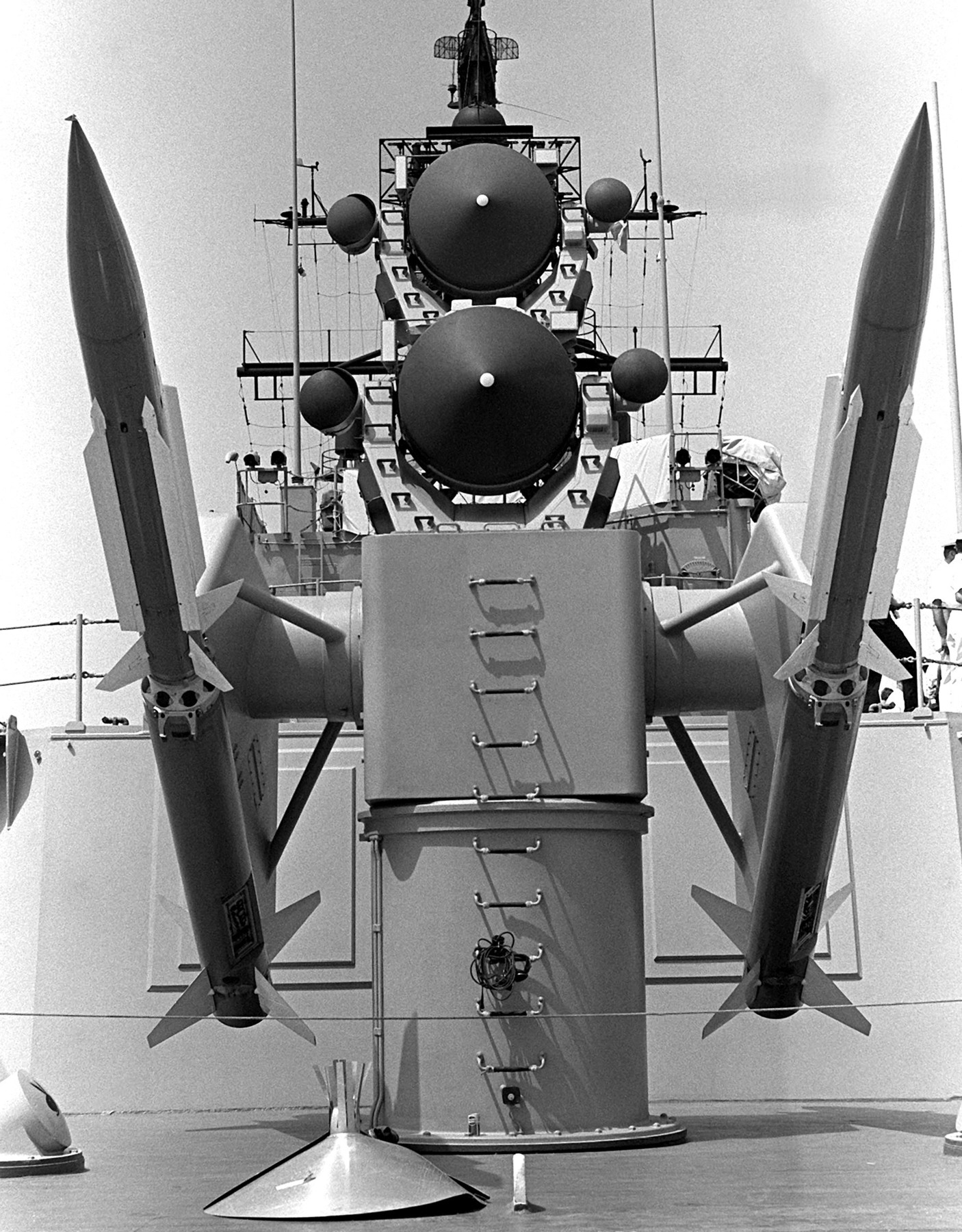 Mk-10 missile launcher with RIM-67A Standard Missiles SM-1ER - 1979 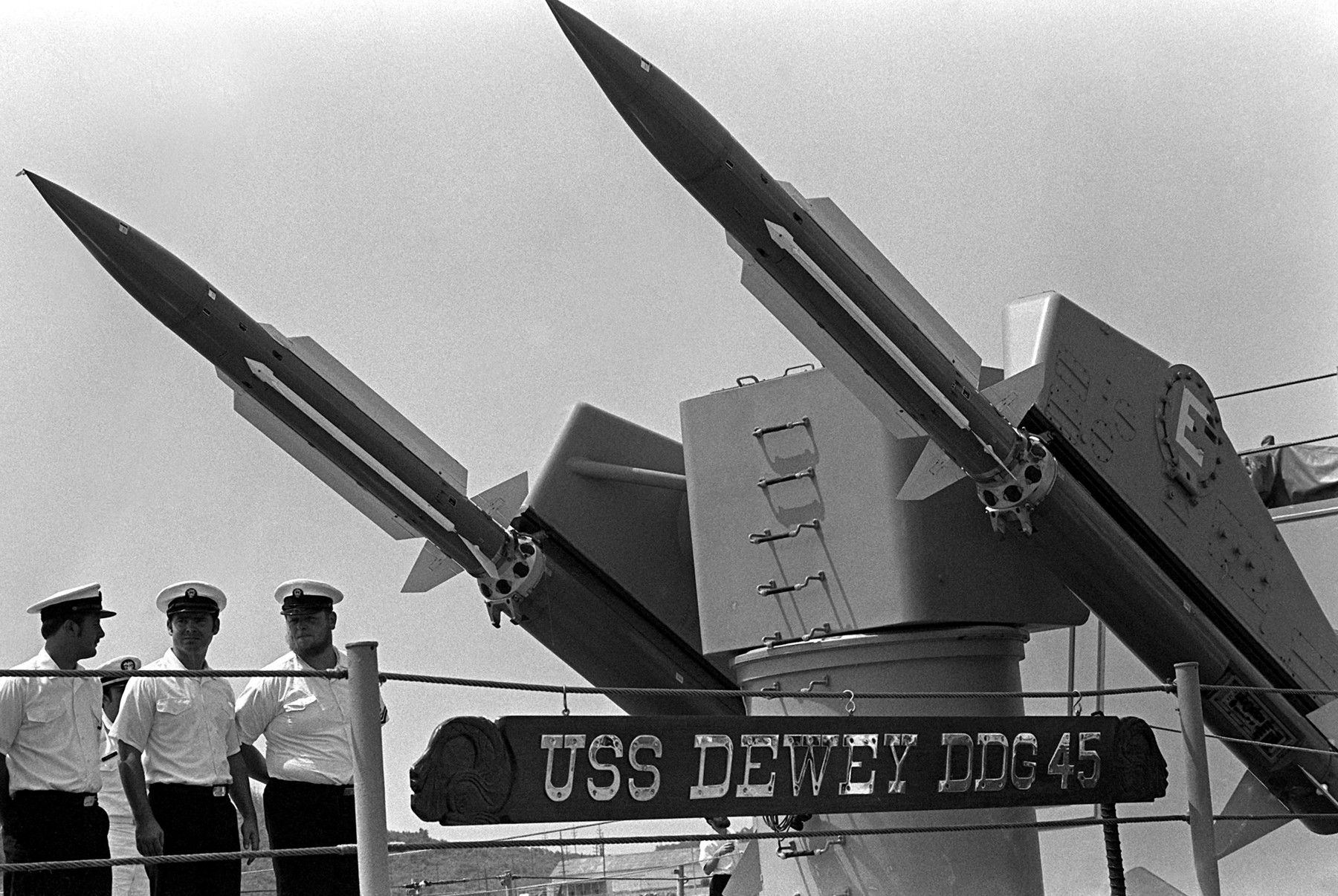 Mk-10 missile launcher with RIM-67A Standard Missiles SM-1ER - 1979 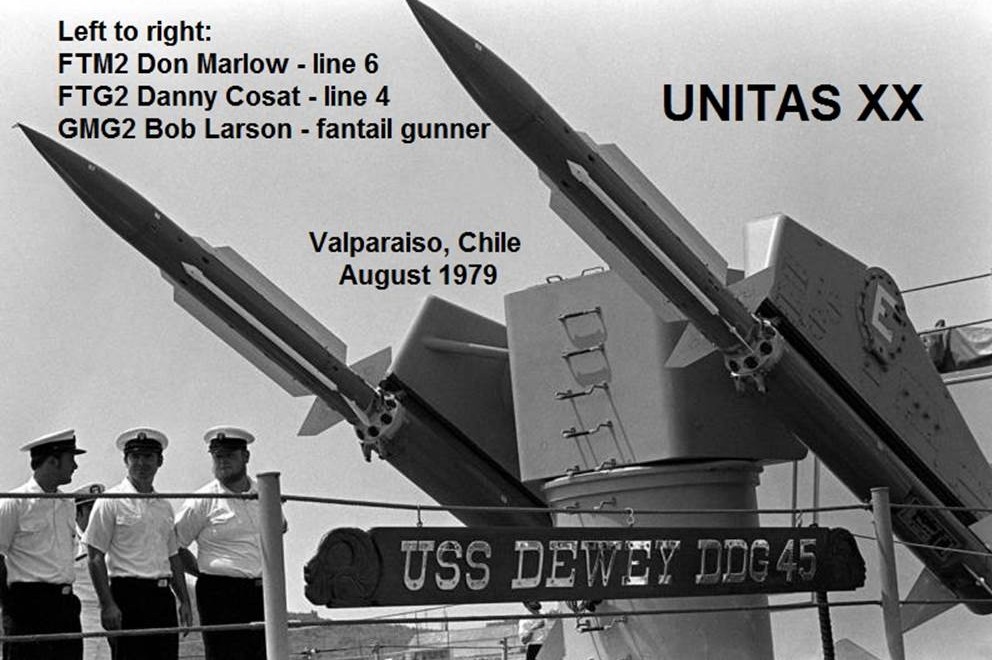 thanks to Danny L. Cosat FCCM(SW) USN retired for the description 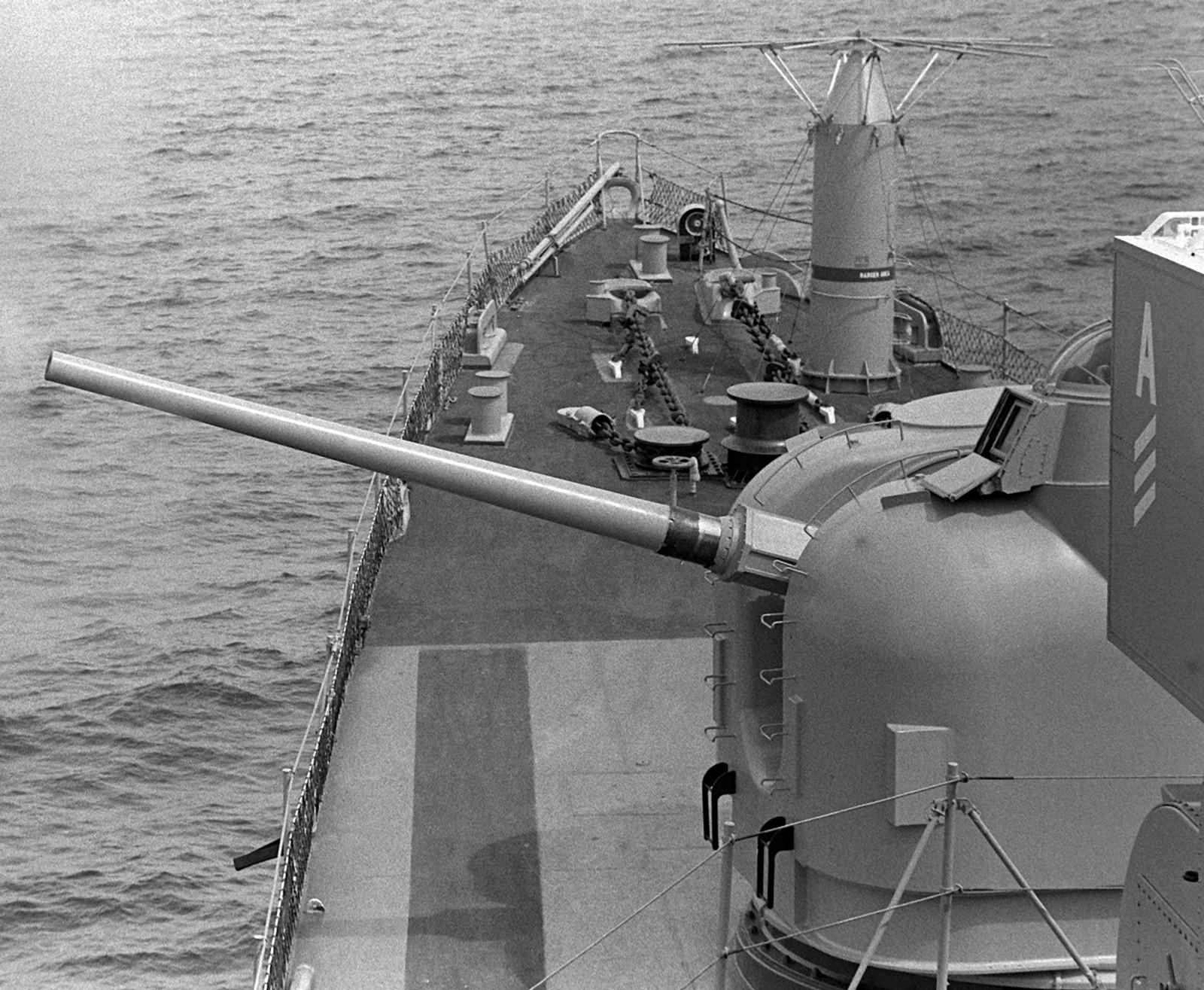 Mk-42 5"/54-caliber gun fire 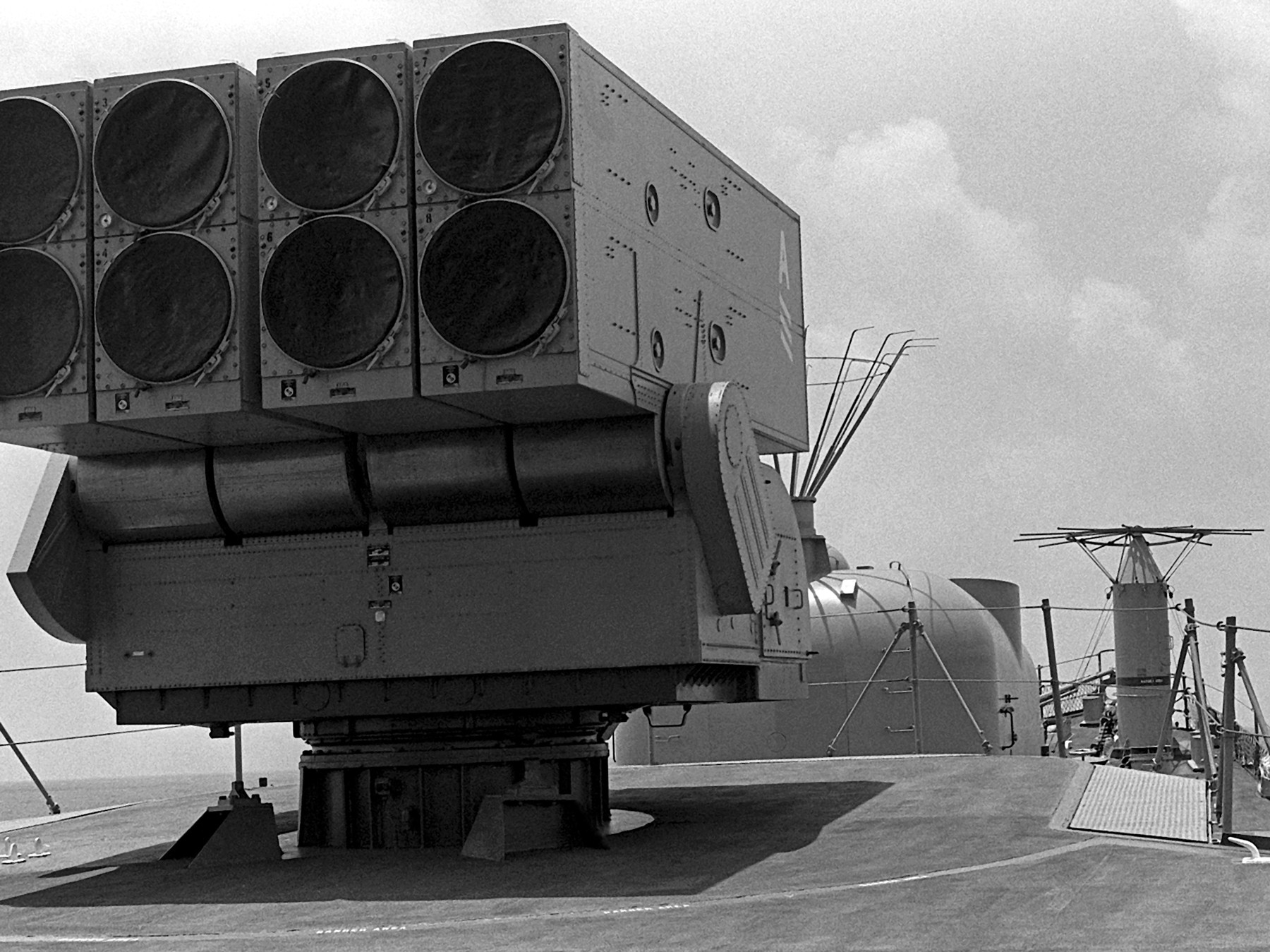 Mk-16 launcher for RUR-5 ASROC anti-submarine rockets 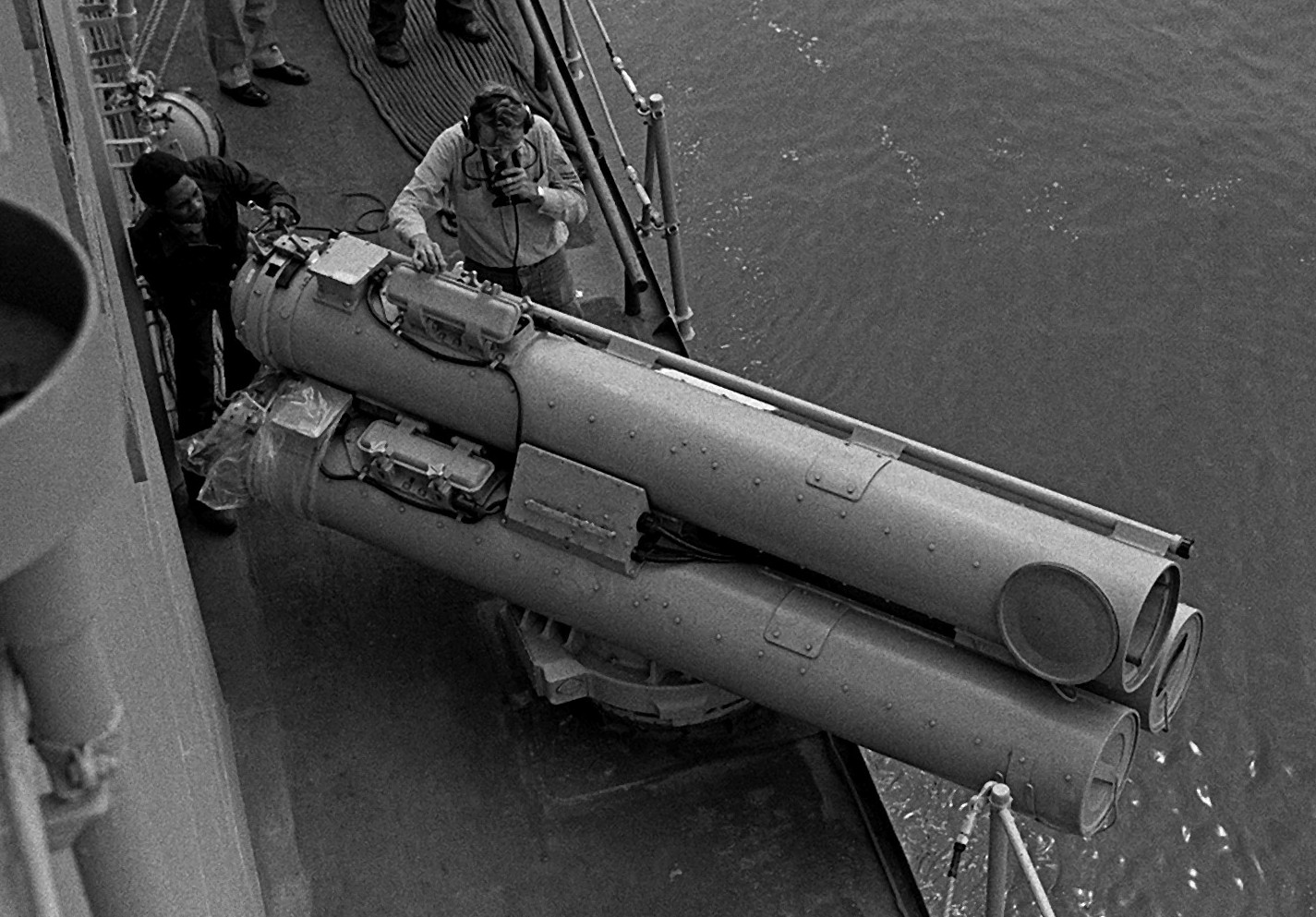 Mk-32 12.75" triple torpedo tubes |
||
|
|
||
|
Admiral George Dewey (December 26, 1837 - January 16, 1917): George Dewey, the only officer of the US Navy ever to hold the rank of Admiral of the Navy, was born on 26 December 1837, in Montpelier, Vermont. On 23 September 1854, he was appointed Acting Midshipman from the first Congressional District of Vermont, and upon graduation from the US Naval Academy in June 1858, was warranted Midshipman, to date from 11 June of that year. He became a Passed Midshipman on 19 January 1861, and on 28 February of the same year he was warranted Master. His subsequent advancement was as follows: Lieutenant, 19 April 1861; Lieutenant Commander, 3 March 1865; Commander, 13 April 1872; Captain, 27 September 1884; Commodore, 28 February 1896; Rear Admiral, 11 May 1898; Admiral, 2 March 1899; and Admiral of the Navy on 24 March 1903 to date from 2 March 1899. During the period 26 April 1861, until 30 August 1867, he had consecutive service on USS Mississippi, USS Brooklyn, USS Agawam, USS Colorado, USS Kearsarge, USS Canadiagua, and again USS Colorado. When detached from the latter he was directed to await orders of 1 October 1867, which returned him to the Naval Academy for a tour of duty which ended in September 1870. On 10 October 1870, he assumed command of USS Narragansett, and in February 1871 was transferred to command of USS Supply, hospital ship. On 27 July 1871, he was ordered to the Navy Yard, Boston, Massachusetts, and after five months' duty there and brief instruction at the Naval Torpedo Station, Newport, Rhode Island, he again commanded Narragansett from 1 March 1873, to August 1875. Ordered on 25 August 1875, to report as Lighthouse Inspector, Second Naval District, at Headquarters in New York, New York, he served in that capacity until 1 August 1877, and as a member of the Lighthouse Board for eight months thereafter. On 1 May 1878, he became Secretary of the Lighthouse Board. On 18 October 1882, he was ordered to command USS Juniata, and remained at sea from 25 October that year until July 1884, when he was ordered detached and to the Navy Department, Washington DC. Again at sea, he commanded USS Dolphin from October 1884 until March 1885, when he transferred to command of USS Pensacola. On 1 August 1889, he was commissioned Chief of the Bureau of Equipment, Navy Department, Washington DC. His term ended by resignation on 30 June 1893, when he again became a member of the Lighthouse Board. On 5 November 1895, he reported for duty as President of the Board of Inspection and Survey, Navy Department. On 30 November 1897, he was ordered to Asiatic Station and, proceeding by steamer, he assumed command on 3 January 1898, his flag in the protected cruiser, USS Olympia, Captain Charles V. Gridley, commanding. The Spanish-American War action at Manila, Philippine Islands, 1 May 1898, not only gave birth to the historical expression "You may fire when you are ready Gridley," but also liquidated the Spanish Fleet and installations in the Manila Harbor without loss of men to the US Fleet. On 10 May 1898, Admiral (then Commodore) Dewey was given a vote of thanks by the Congress of the United States, and three days later was commissioned Rear Admiral, to date from 11 May 1898. That promotion was an advancement of one grade for "highly distinguished conduct in conflict with the enemy as displayed by him in the destruction of the Spanish Fleet and batteries in the harbor of Manila, Philippine Islands, May 1, 1898." He was relieved of command of Asiatic Station on 4 October 1899, and ordered to the Navy Department, Washington, where on 29 March 1900, he was designated President of the General Board. An Act of Congress, 2 March 1899, created the rank of Admiral of the Navy. It provided that when such office became vacant either by death or otherwise, the office would cease to exist. On 24 March 1903, Admiral Dewey, who held the rank of Admiral since 8 March 1899, was commissioned Admiral of the Navy, with date of rank 2 March 1899, and became the only officer of the United States Navy who was ever so commissioned. He held the rank of Admiral of the Navy until his death in Washington, DC, on 16 January 1917. The body of Admiral Dewey was interred in Arlington National Cemetery, Arlington, Virginia, on 20 January 1917. At the request of his widow, his remains were reinterred in the crypt of Bethlehem Chapel at the Protestant Episcopal Cathedral, Mount Saint Alban, Washington, DC, on 28 March 1925. Besides his widow, Mrs. Susan Goodwin Dewey, Admiral Dewey was survived by his only son, George Goodwin Dewey. Admiral Dewey earned the Civil War Medal; the Spanish Campaign Medal; the Philippine Campaign Medal; and the Dewey Medal (commemorating the Battle of Manila Bay). A destroyer, USS Dewey (DD-349), was named to honor Admiral of the Navy George Dewey. Built by the Bath Iron Works Corporation of Bath, Maine, she was launched on 28 July 1934, under the sponsorship of Miss Ann M. Dewey of Quechee, Vermont, great-grandniece of Admiral Dewey. Dewey was placed in commission at the Boston Navy Yard on 4 October 1934, and earned thirteen battle stars for operations in the Pacific War Area during World War II. BATTLE of MANILA BAY Commodore George Dewey achieved a crushing naval victory over the Spanish fleet in the waters west of the city of Manila in the Philippines on 1 May 1898 during the Spanish-American War (21 April to 13 August 1898). Although the operation had long been a part of the U.S. Navy's strategic plans in the event of a conflict with Spain, no one, even at the start of the war could foresee the impact Dewey's success would have on the future of the United States. Beginning in 1894 the Naval War College (and later special boards convened by the Secretary of the Navy) examined the possibility of war with Spain over trouble in Cuba. An attack by the U.S. Asiatic Squadron against the Spanish forces in the Philippines first became a part of the Navy's plans in 1896. The objective of the offensive operation was not to conquer all or part of the Spanish colony, but to tie down or divert enemy ships and give the United States' a stronger bargaining position at the peace settlement. Nevertheless, the consequences of Dewey's triumph were much different. Assistant Secretary Roosevelt telegraphed Commodore George Dewey on 25 February ordering him to concentrate the ships of the Asiatic Station at Hong Kong. In the event of war he was to take his squadron and destroy the Spanish ships in Philippine waters. Dewey's command at Hong Kong consisted of the protected cruisers Olympia, Boston, and Raleigh, and the gunboats Concord and Petrel. The Revenue Cutter McCulloch joined the force on 17 April, and the protected cruiser Baltimore arrived on 22 April. Dewey also prepared for future operations in a region without friendly bases by purchasing the British steamers Nanshan and Zafiro to carry coal and supplies for his squadron. In a meeting called by the governor general of the Philippines on 15 March, Rear Admiral Patricio Montojo y Pasaron, in command of Spanish naval forces in the colony, expressed his opinion that his squadron would be destroyed by the onslaught of the ships of Dewey's squadron. The Spanish naval force consisted of seven unarmored ships carrying thirty-seven heavy guns and weighing a total of 11,328 tons. Montojo's largest ship was made of wood. Dewey's force that eventually engaged the Spanish squadron was much stronger, consisting of six steel vessels mounting fifty-three guns and displacing 19,098 tons. Four of these had armored decks. Montojo recommended fortifying the entrances to Subic Bay, northwest of Manila, and moving his ships there to await Dewey's attack. If the Americans bypassed Subic and anchored in Manila Bay, it was thought, Montojo could sneak up on them during the night and inflict some damage. The governor general agreed. However, Montojo did not track the progress of the work in Subic Bay. Secretary Long telegraphed Commodore Dewey at Hong Kong on 21 April informing him that the U.S. blockade of Cuba had begun and that war was expected at any moment. On 24 April, British authorities informed the commodore that war had been declared and he must leave the neutral port within twenty-four hours. Dewey also received a telegram from the Navy Department, instructing him to proceed immediately to the Philippine Islands and begin operations against the Spanish fleet. However, Dewey wanted to receive the latest intelligence from the American consul at Manila, Oscar Williams, who was expected daily. The American squadron moved to Mirs Bay on the Chinese coast thirty miles east of Hong Kong to await a circulating pump for the Raleigh and the arrival of Williams. They spent two days drilling, distributing ammunition, and stripping the ships of all wooden articles (which could add to the damage of fires on board ship caused by enemy gunfire). Almost immediately after Williams arrived on 27 April, the American squadron departed for the Philippines, in search of the ships of the Spanish squadron. After learning that war had been declared, Admiral Montojo took his squadron into Subic Bay only to discover that the commander there still needed another six weeks to mount his guns on Isla Grande at the bay's entrance. On 28 April the Spanish admiral learned that the Americans had left Mirs Bay bound for the Philippines. After calling a council of his captains, he returned with his ships to Manila Bay. The two passages into the latter were guarded by seventeen guns including nine obsolete muzzle loaders. The Spanish attempted to mine the main channel, but the water was so deep and the entrance so wide that neither mines nor shore batteries were an effective barrier to enemy ships passing through during the night. Of the more than 200 guns near the city of Manila, only twelve were breech-loaders positioned to fire out to sea. Montojo rejected the idea of fighting under the guns of the city because civilian structures would likely be hit by American fire. The Spanish decided to anchor their ships in the shallow waters under the guns of the Cavite arsenal, on a small peninsula seven miles southwest of Manila. Deeply pessimistic about his fleet's chances of survival, Montojo believed it best to give his men a better chance to escape from their vessels should they be sunk in the upcoming battle. Consul Williams accurately reported that Montojo intended to fight his squadron while under the guns in Subic Bay, and Dewey sent two of his cruisers to reconnoiter. Finding Subic Bay empty, and in defiance of the reports of mines in the channel, the Americans pressed on into Manila Bay and discovered the Spanish squadron near Cavite. Leaving his two auxiliaries in the bay guarded by the McCulloch, Dewey formed his remaining ships into a line and steamed in a oval pattern along the five-fathom curve, pouring a heavy fire into the outgunned and obsolete Spanish force. The enemy replied with wildly inaccurate gunfire from their ships and two 5.9 inch guns on Sangley Point. The Americans scored critical hits on the larger Spanish warships, setting them ablaze. After nearly two hours of fire, Dewey ordered his captains to withdraw, acting on reports that his ships were running low on ammunition. Dewey took his squadron five miles off Sangley Point and signaled his captains to come on board and report their condition. The commodore discovered that his squadron had sustained very little damage and that he had plenty of ammunition to continue the battle. After allowing the crewmen to enjoy a light meal, Dewey ordered his ships to reengage the remnants of Montojo's shattered squadron. The Spanish admiral had pulled his surviving vessels behind Cavite into the shallow waters of Bacoor Bay to make a final stand. Hitting the Spanish ships in their new anchorage proved difficult, and Dewey ordered the gunboats Concord and Petrel, with their shallow draft, to finish off the enemy at close range. The garrison at Cavite raised a white flag at about 12:15, and the firing ended shortly thereafter. Montojo's fleet was destroyed, suffering 371 casualties compared to only 9 Americans wounded. When official word on the magnitude of the U.S. Navy's victory reached the United States, nearly a week later, the American public heaped enthusiastic praises on Dewey as wild celebrations eruption throughout the country. However, 26,000 Spanish regulars and 14,000 militia garrisoned various points in the Philippine Islands including 9000 at Manila. The U.S. squadron took control of the arsenal and navy yard at Cavite and Dewey cabled Washington stating that, although he controlled Manila Bay, he needed 5000 men to seize Manila itself. The completeness of Dewey's victory, so early in the war, prompted the administration of President William McKinley to send the troops necessary to capture Manila from the Spanish. The U.S. Army sent substantially more than Dewey asked for, with 10,844, under the command of Major General Wesley Merritt, reaching the Philippines before the end of the war. Meanwhile, Dewey had brought the Filipino insurgent Emilio Aguinaldo to Cavite in May hoping to learn more about the Spanish garrison and welcoming any distraction the Filipino rebels might provide by their operations against Spanish forces. However, Dewey and the American consuls in the Far East overestimated their ability to control the consequences of these actions, which included Aguinaldo's expectation that the United States would support his demand for the colony's independence. By the time American forces were prepared to assault Manila in August, the potential problems of cooperating with the rebels became apparent to Dewey and Merritt. The American commanders reached an oral agreement with the governor-general at Manila to surrender the city after a brief naval bombardment and infantry assault. On the morning of 13 August the guns from the U.S. squadron opened fire and Merritt's troops went forward. After sharp fighting in some quarters the Spanish surrendered, allowing the Americans to occupy Manila, keeping the Filipino insurgents out of most sections of the city. The peace protocol was signed between the United States and Spain on 12 August, but word of this did not reach Manila until four days later. The negotiations that led to the United States accepting control of the Philippine Islands are too lengthy to relate here in detail. Pressured by expansionists, and fearing that another European nation would fill the vacuum created by the collapse of Spanish colonial power, President McKinley decided that the United States should take over administration of the islands. It was left to a future American government to turn control of the country to the Filipinos. For the most part, the United States reluctantly became a colonial power in the Pacific. Dewey's victory at Manila Bay began a series of events that dramatically increased America's interests and commitments across the great ocean. |
||
|
|
||
George Dewey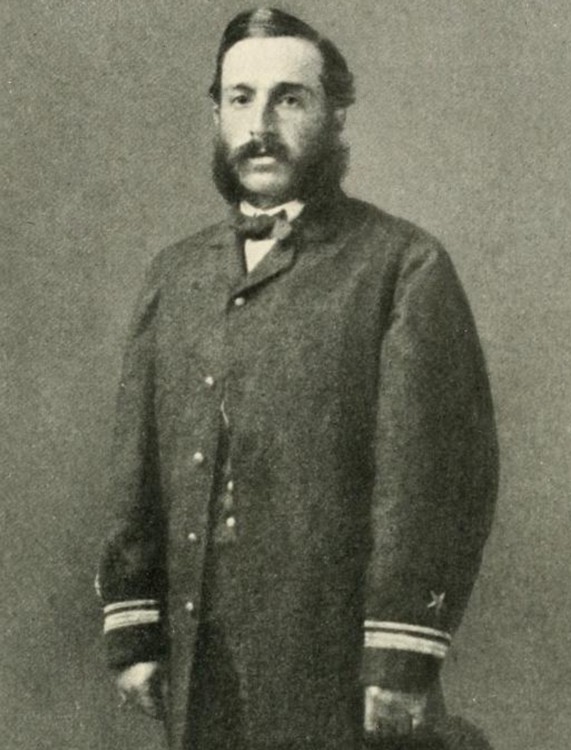
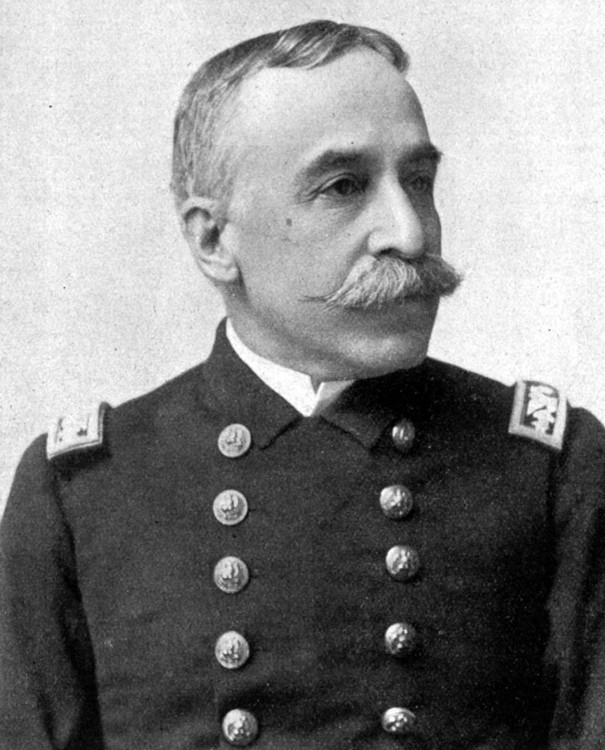 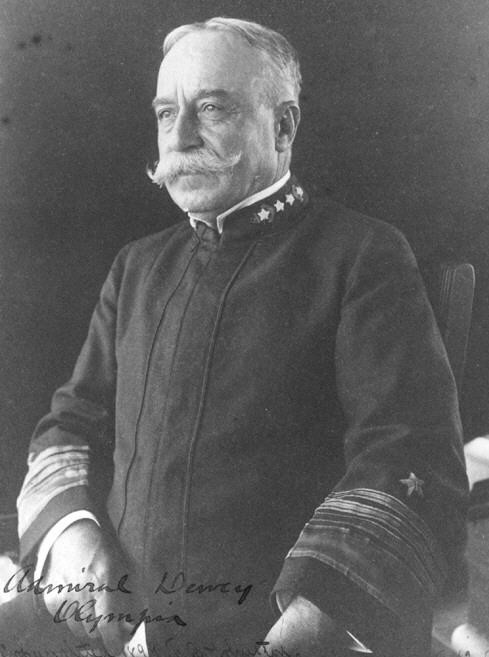
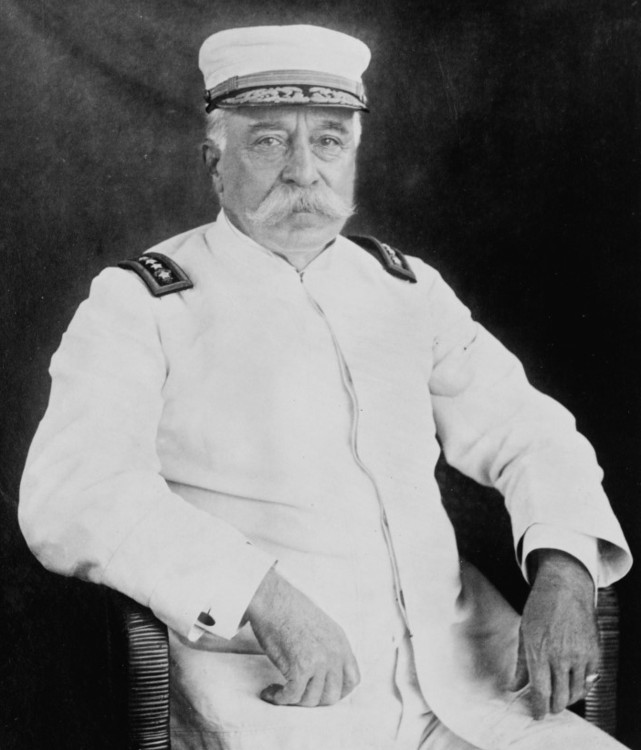 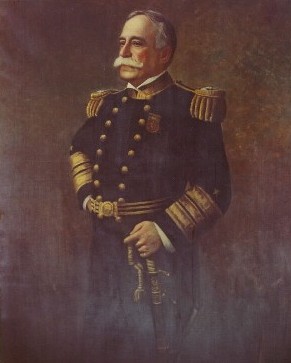
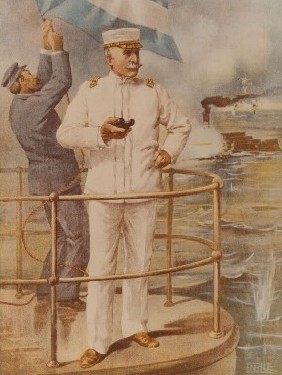 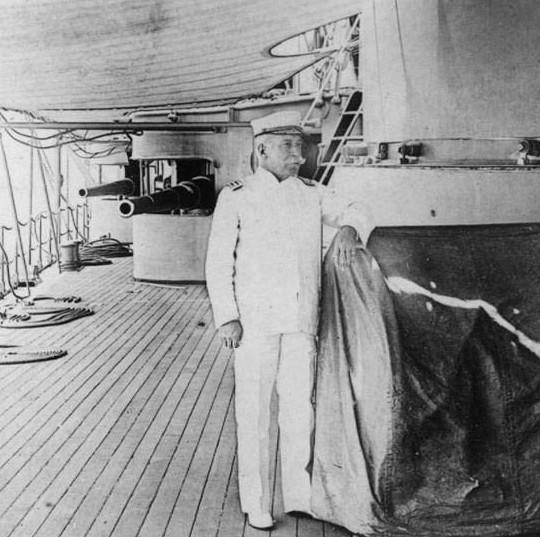 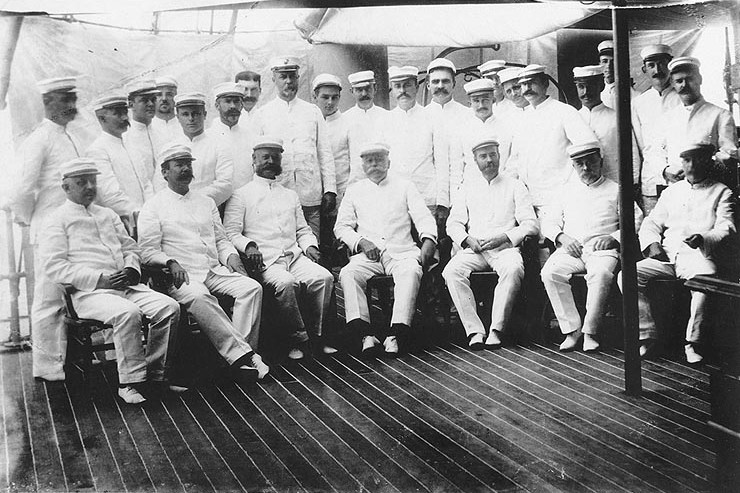 Rear Admiral George Dewey with his staff and ship’s officers aboard USS Olympia - 1898 |
||
|
|
||
|
USS Dewey (DDG 45): USS Dewey (DL-14 / DLG-14 / DDG-45), the ninth Farragut class destroyer, was laid down 10 August 1957, by Bath Iron Works, Bath, Maine. She was launched 30 November 1958 and was commissioned 7 December 1959 with Commander Elmo R. Zumwalt, Jr. as the commanding officer. In early 1960 the USS Dewey engaged in training operations off the New England coast and in the Caribbean, preparing Dewey for her role in the Atlantic Fleet. As a part of USS Dewey regular cycle of training and deployments she participated in the 1961 Northern Europe GoodWill tour. The next significant event was the 1962 Cuban Missile Blockade that Dewey played a part in. In 1965 Dewey cruised in the Mediterranean and in 1966 the Caribbean. In 1967-1968 Dewey operated in the Pacific and did West Pac tours in support of operations in Viet Nam. When the USS Pueblo was captured in North Korea, Dewey operated off Korean coasts for a number of months. Late in 1968 Dewey had a Blue Nose Line Crossing Ceremony when they passed through the Arctic Circle. Dewey’s last deployment in 1969 was a North Atlantic/Med-Indian Ocean cruise. USS Dewey was decommissioned 21 November 1969. After an extensive conversion as part of the Navy's Anti-Air Warfare Modernization Program Dewey was recommissioned 31 March 1971 as a guided missile frigate, hull number DLG-14. Back in service in 1972 Dewey had West Pac deployments supporting operations in Viet Nam. Accordingly Dewey had Shellback Initiation Ceremonies for crossing the equator in the Pacific Ocean and later that year in the Atlantic Ocean. In late 1973/early 1974 Dewey was involved in the Yom Kippur Conflict and participated in a Radar picket at Crete. On 30 June 1975, the USS Dewey was refurbished and reclassified as a guided missile destroyer, receiving new hull number DDG-45. Dewey went on deployments to the Mediterranean and North Atlantic in 1977, the Mediterranean in 1978. In 1979 Dewey participated in UNITAS, a training exercise that cultivates stronger ties, and increases interoperability with foreign allies. Dewey did a regular deployment to the Mediterranean in 1982, a Standing Naval Force Atlantic (STANAVFORLANT) evolution in 1983 and another Mediterranean deployment in 1985. Dewey was decommissioned 31 August 1990 and struck from the Naval Vessel Register on 20 November 1992. |
||
|
patches |
||
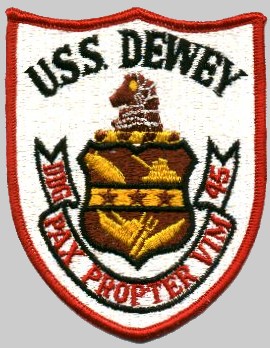
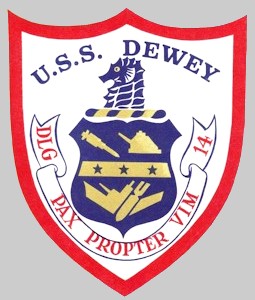 |
||
|
|
||

